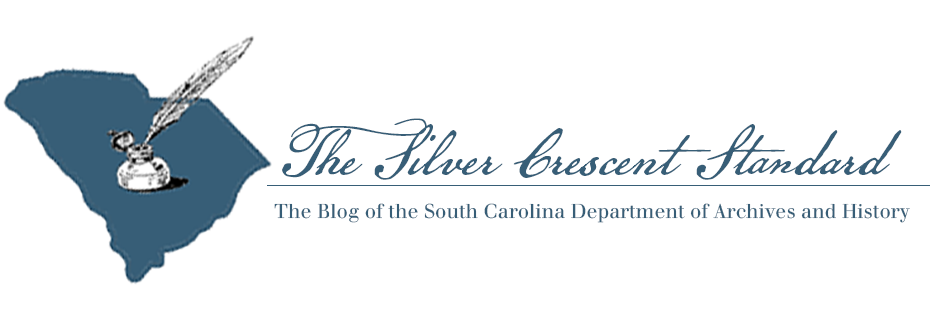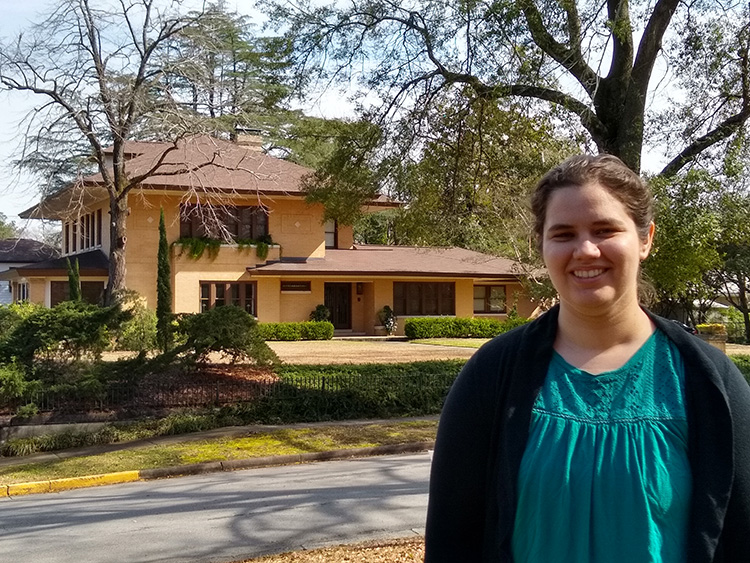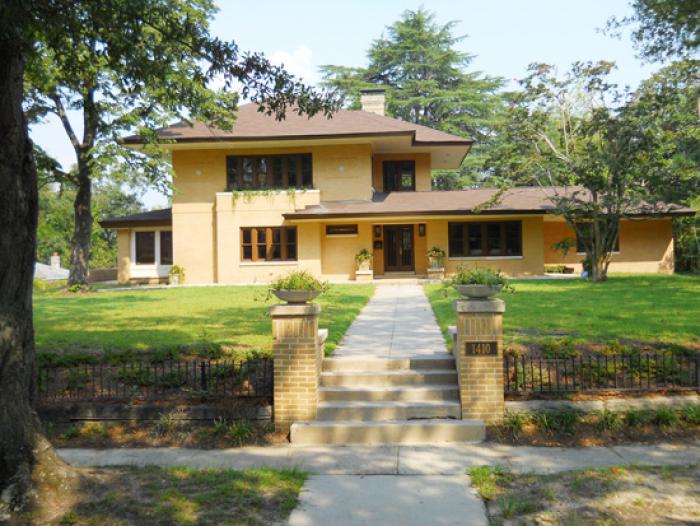

Meet the Staff: Virginia Harness
Although I was born in Indiana, my family moved to Morgantown, West Virginia when I was a toddler and then on to Newton, Kansas the summer after I turned eight. My parents relocated again while I was in college, to Lynchburg, Virginia, where they’ve been ever since. My mom is originally from Washington State and my dad grew up in Maryland, so my roots really are everywhere. Researching my genealogy taught me that roaming appears to be a family trait on both sides, as it’s pretty rare for any of my ancestors to have lingered in one place for more than one or two generations. I’ve certainly continued the nomadic tradition. I went to St. John’s College in Annapolis, where I graduated with a B.A. in Liberal Arts in 2011. I took an internship at an archives outside Chicago for a year, then went to the University of Virginia for graduate school and got my M.A. in Architectural History with a certificate in Historic Preservation. Shortly after graduating in 2014, I took a job at an environmental consulting firm in Los Angeles. I was in L.A. for about two years before starting my position at SCDAH in April 2016.
What do you do as the Architectural Historian in the State Historic Preservation Office?
Like most of my colleagues, I wear a lot of different hats when it comes to job responsibilities. Most of my time is taken up by the National Register of Historic Places and the tax credit programs. I co-coordinate the National Register program with the Historian position in our office. I review Preliminary Information Forms to assess if properties are eligible for listing, review and revise National Register nominations, send out notifications, help organize Review Board meetings, and generally facilitate the process of listing places in the National Register. It’s also my job to review the first part of state and federal tax credit applications for the rehabilitation of historic buildings, which essentially means I make sure the building in question is historic and eligible for the program. I also assist with the review of reports that come in for projects that trigger preservation laws, answer research questions, and help review grant applications. I occasionally get to go on site visits related to my work, which is always a nice change of pace. I’ve also taken on some tasks that definitely weren’t covered in any of my classes in grad school, like managing portions of our website and redesigning some of the SHPO’s Access databases and PDF forms.
Why did you want to work in historic preservation?
Visiting historic sites was a mainstay of summer vacations for me growing up. Living in the middle of the country with grandparents on both coasts, we made long cross-country drives and broke up the monotony of the highway by checking out historic places. We stopped in Utah to see Golden Spike National Historic Site, explored the final stop of Lewis & Clark in Washington and Oregon, visited Lincoln’s home in Springfield, Illinois, and walked through the cornfields at Antietam Battlefield in Maryland, among other history-related adventures. As a kid, visiting these places helped me connect with history and made it something that could be seen and touched. When I was considering possible graduate school programs, I knew I was interested in pursuing history, but I opted for architectural history and historic preservation as a focus because I wanted to work in a field that focused on the tangible parts of the past.
Do you have a favorite historic structure/property in South Carolina?
It’s honestly far too hard to pick a favorite, but one historic building I do get to enjoy every day is the J. Davis Powell House here in Columbia. I first came across the Powell House when I was reviewing the National Register nomination for the Melrose Heights Historic District, one of my first projects when I started at the SHPO almost three years ago. I can actually see the Powell House from my apartment, and it is great to sit at my desk and be able to see this wonderful Prairie style house out my window. I feel a bit like the architect Mies van der Rohe, who famously preferred to live across from his buildings rather than in them, so that he could enjoy the view.

What is your favorite part of the job?
My favorite thing about my job is learning about people and places that I would never come across otherwise. Whether I’m at my desk or out in the field, my job is like an adventure through South Carolina history. On a site visit with the Department of Transportation we discovered the ruins of an early 20th century timber mill. I learned that a house in Columbia I drive past regularly was once the home of Dr. Matilda Evans, the first female African American doctor in the state. I traipsed through the mud to see the remnants of an 18th century armory and studied European botanists in early America. I delved into the histories of mid-century motels in Myrtle Beach and textile mills in the Upstate. On any given day my work could include anything from a prehistoric Native American archaeological site to a car dealership associated with the beginnings of NASCAR. I love that my job exposes me to the kind of history that you would be hard pressed to find in a textbook. A lot of my work takes a zoomed in look at specific times and places, and it’s this kind of local history that is often most meaningful to people. I’m glad to have the chance to learn about it and help record this history for future generations.
Who is your favorite historical figure or time period?
Over the last few years I’ve become really interested in the Reconstruction era. It’s not a time period that particularly struck a chord with me when I was learning about it as a kid in school, but as I’ve delved deeper into the history of it I’ve found it to be a fascinating and layered part of the American story. Many of the successes and failures of Reconstruction continue to reverberate into the present day and I think there are a lot of lessons to be learned from studying it. South Carolina especially has some pretty incredible history from the Reconstruction era. I just finished a book on Robert Smalls that touches on some of that and it was a great read. I haven’t been to the Reconstruction Era National Monument in Beaufort County yet, but I’m looking forward to making a trip down there soon. I will also shamelessly plug that our current exhibit at SCDAH is on Reconstruction, and you can come see it in person or explore a digital version online.
